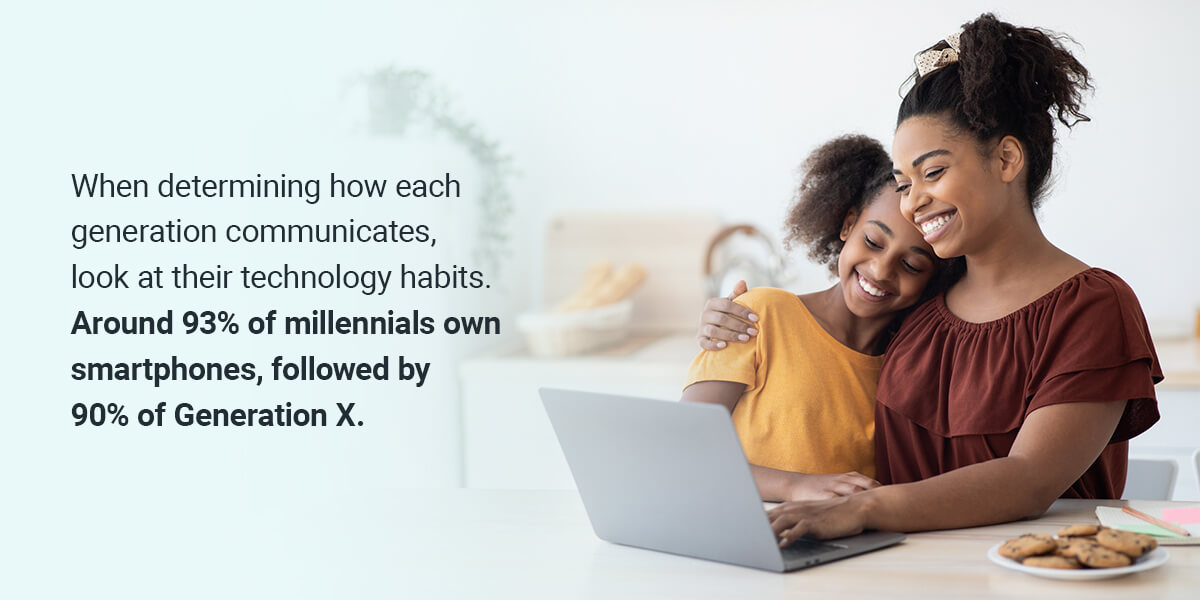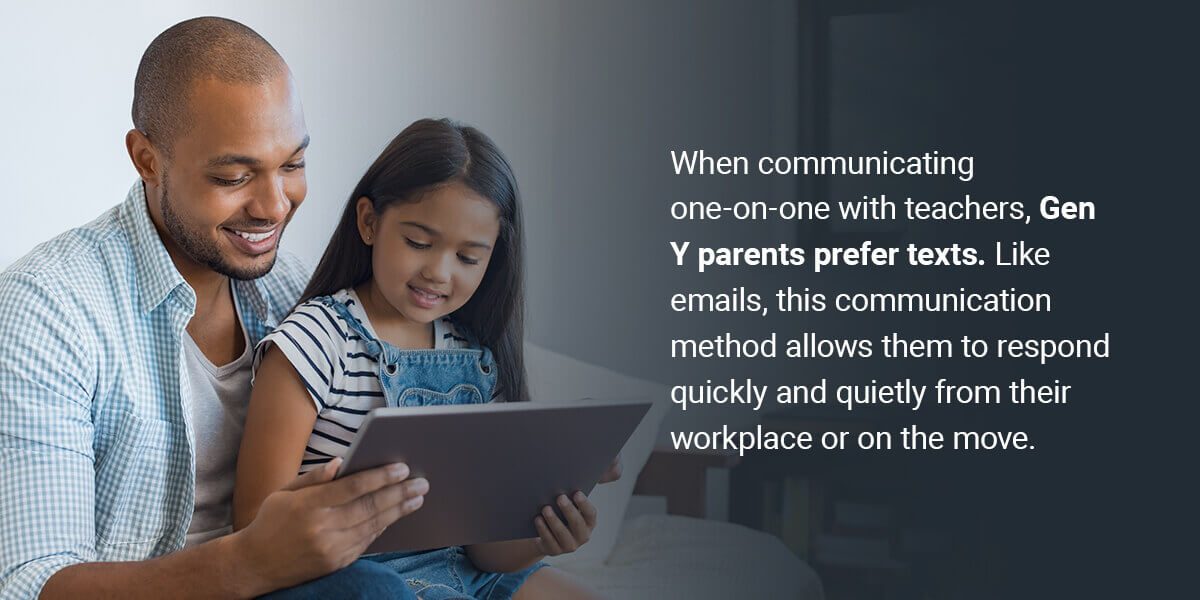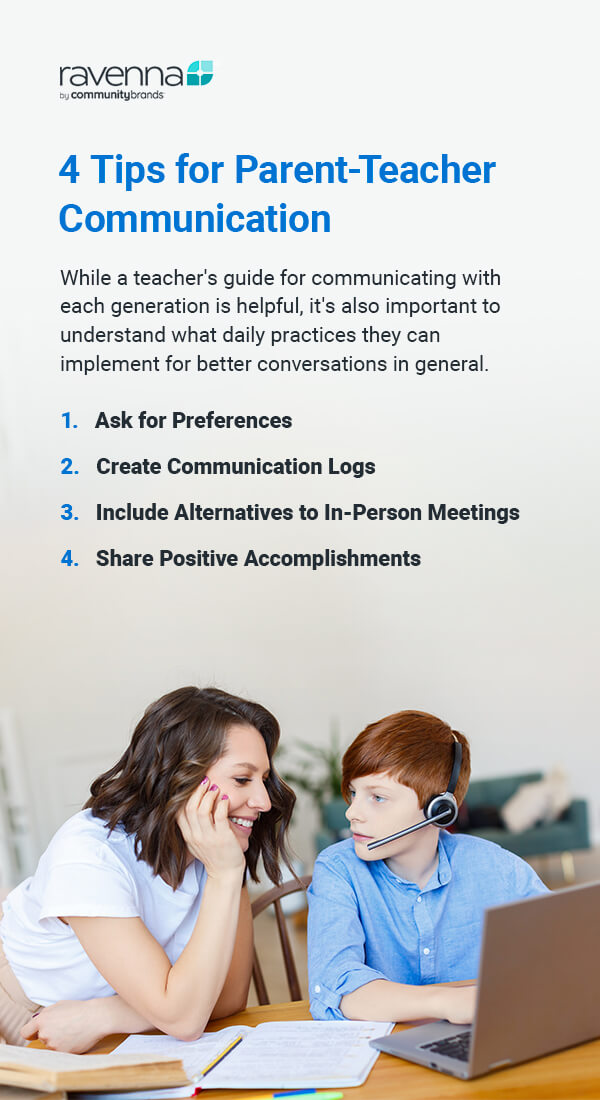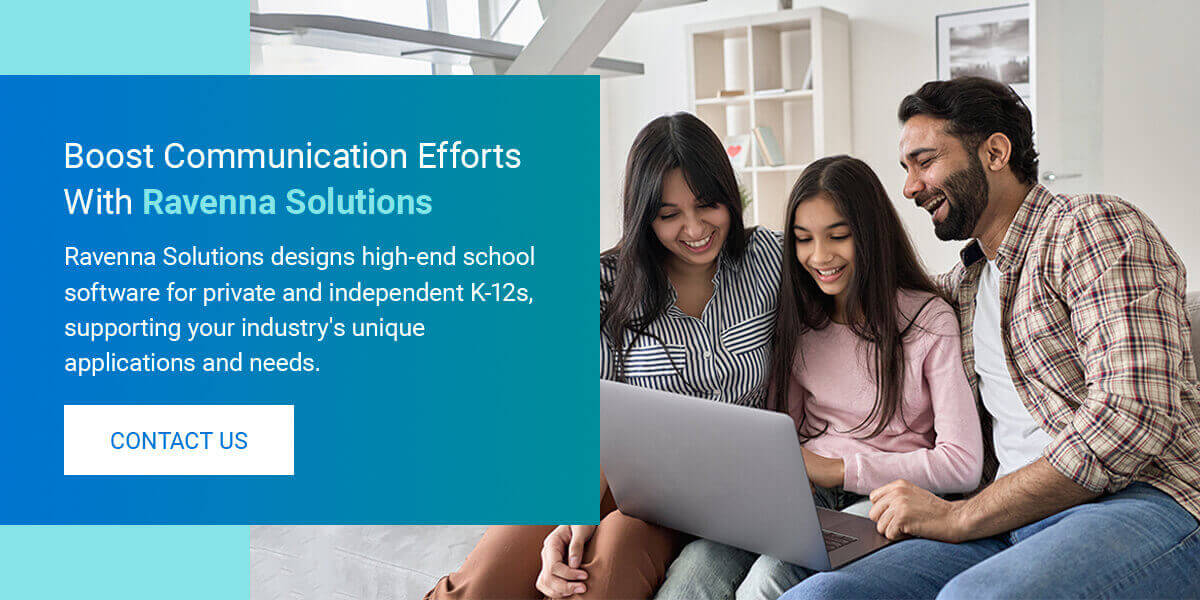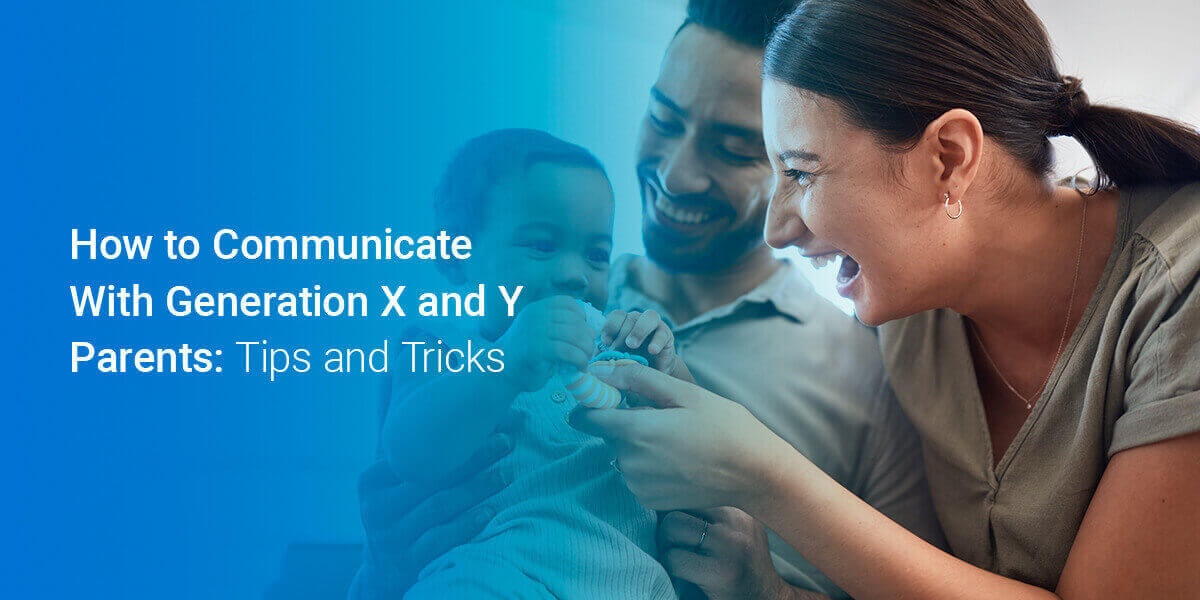
From introductions to progress reports, schools communicate with parents constantly. With many generational characteristics of parents influencing communication habits and preferences, understanding your students’ family demographics can help you implement stronger communication efforts at your school.
Who Are Generation X and Y?
Often shortened to Gen X, Generation X includes people born between 1965 and 1980. They’re younger than the baby boomers, the generation that followed World War II, but older than Generation Y. They were one of the first generations to integrate technology like computers and cellphones into their daily and home lives, but they remember the days before these tools. Because they lived through so many technological advancements, they’re now adaptable and resourceful.
Generation Y is more commonly known as millennials or Gen Y. Born between 1981 and 1996, they’re the largest generation, accounting for 72.1 million Americans. They’re the first generation to grow up with the internet and technology defining their childhoods. Many of their childhoods were shaped by the 2008 financial recession, changing their family dynamics. More of Gen Y is unmarried—in 2019, only 44% of millennials were married and 12% cohabitated with partners. Their nontraditional family models mean teachers and administrators might interact more with partners, step-parents, and grandparents.
How to Communicate With Different Generations
While members of Gen X have been parents for some time, more millennials are entering their children into school systems. Further, baby boomers are aging out, becoming grandparents instead of parents with kids in school. When communicating with parents from different generations, understanding each generation’s preferences can help your school adjust its communication efforts to reflect your school’s changing parent population.
Social Media Use Between Generations
When determining how each generation communicates, look at their technology habits. Both Gen X and millennials lean into modern technology. Around 93% of millennials own smartphones, followed by 90% of Generation X. This rate is up from previous generations, where only 68% of baby boomers owned a smartphone. When planning your communication strategies with parents, knowing what devices they use can determine how you can expect to reach them. Further, it might open up different avenues, like social media.
About 70% of adult Americans use Facebook daily, making it the most used social media platform out of Facebook, Instagram, and Twitter. Instagram ranks second at 59% using this site every day, and 46% for Twitter. When preparing social media communication efforts, Facebook and Instagram might help you reach more parents.
You can continue to leverage your social media platforms by understanding where your audiences go. Even though most adults use several platforms, millennials and Gen X seem to prefer different apps:
- Adults aged 19-29: As the younger side of millennials, this group has a unique social media use. They seem to like Instagram the most, with 71% using the platform. This rate only declines slightly for Facebook to 70% using that app. While Twitter comes in last place at only 42% using it, younger millennials make up the largest portion of Twitter users.
- Adults aged 30-49: This age group mixes older millennials and younger Gen X, highlighting how the divide between the generations isn’t entirely black and white. Around 77% of this age group uses Facebook, making it their most utilized social media app. Compared to the younger millennials, Instagram use for this group drops significantly to 48%. They use Twitter the least out of any age group, with only 38% using this site.
- Adults aged 50-64: Like the previous age group, older Generation X parents prefer Facebook and around 73% use it. Twitter use falls to approximately 38%. They use Instagram the least out of any age group, with only 29% using this platform.
When you understand which social media platforms each generation prefers, you can make more targeted content and decide where to drive your efforts. While most millennials and Gen X seem to use Facebook, Instagram supports a large portion of your younger parents.
Generation X Communication Preferences
Generation X values efficiency and convenience. They’re more adept with technology than baby boomer parents, allowing them to feel more comfortable navigating smartphone apps and digital platforms. However, they also see the importance of verbal communication. Because of this, they require a more mixed communicative effort.
When communicating digitally, they prefer email. This communication method allows them to receive comprehensive information without interrupting their workdays or activities. Try to keep your messages concise and necessary to optimize their time and your effort. Face-to-face and phone conversations are ideal when they want to have more of a discussion.
Some tips for communicating with Gen X parents include:
- Sharing calendars with appointment slots: Because they like calls and meetings when necessary, optimize communication by creating a shared calendar showing your available times. They can efficiently schedule a time to speak with you and you can support their tech-savvy habits.
- Emailing updates and newsletters: Email can be a great way to share regular updates and announcements. Teachers can keep parents in the loop about curriculum progression, while administrators can remind them of upcoming events.
- Announcing updates on Facebook: Although they’re older parents, they’re comfortable with cell phones and social media. They use Facebook more than other platforms, making it a great place to make announcements and updates. With pages and groups, your parents can form a strong community where they communicate and collaborate with administrators and each other.
Knowing what you can do to reach Gen X parents better can help you form stronger relationships with them and continue to help their children learn and grow.
Generation Y Communication Preferences
How do millennials communicate? Millennials are even more comfortable with technology than Gen X and appreciate the immediacy and low effort of many apps. They expect more technology integrations in education, classrooms, and communication, enabling your teachers and administrators to leverage more modern solutions with this demographic.
When communicating one-on-one with teachers, Gen Y parents prefer texts. Like emails, this communication method allows them to respond quickly and quietly from their workplace or on the move. You can even place them in group chats with other parents to send out general updates promptly and efficiently while connecting them with their school community. They’re also more likely to respond to video call solutions.
Some tips for communicating with millennial parents include:
- Exploring group chat apps: You can host group chats on several apps, such as GroupMe and Facebook Messenger. When parents might own different smartphone models and makes, a third-party app can ensure more parents can participate. Group chats should be optional, allowing parents to receive information in a way that works best for them.
- Sharing available communication channels: Millennials are accustomed to convenience, so they’ll likely take the communication method that works best for them at the moment. Communicate how they can reach administrators and teachers so they can adjust strategies to their needs and preferences.
- Determining texting priorities: Your students’ parents might share communication information with several individuals, from partners and spouses to grandparents and exes. Direct better communication efforts by establishing a hierarchy or schedule among families. Maybe parents want you to call the grandparents first because they’re home and available, or prefer you text their partner if they don’t respond in a certain amount of time.
Millennials are a unique generation, and your communication efforts should reflect their needs and preferences now that their children are starting school.
3 Tips for Administrative Communications With Parents
Regardless of which generation populates your school, administrators should know how to communicate well with their parents. Knowing some general communication practices can help you maintain positive relationships with students’ parents and guardians, which helps you create the best learning environment possible. Here are three tips to get you started:
1. Clarify Communication Standards
Every parent has different communication standards and etiquette, and administrators have many tasks and responsibilities they must juggle. You can maintain healthy boundaries and accurate communication expectations with parents by stating your school’s communication standards and processes. When sharing multiple communication methods, you might explain how parents can use each one. For emergencies, they might call you, while other requests can go through text or email.
You might also set open office hours when you can give parents opportunities to schedule meetings or reach out. Further, clarifying when you’ll be offline can give them a better understanding of when to expect a response. You might also want to offer them alternatives if they can’t reach you, like a receptionist or another administrator with a similar role.
2. Urge Parents to Volunteer
Asking for parent volunteers can show you care about their involvement in their children’s education and value their skills. Optional volunteering gives parents a chance to choose their involvement levels and get closer to their school community on their time. Administrators can email and text volunteer forms to parents for upcoming events or classroom opportunities. Because Gen X and millennial parents are comfortable with technology, they can navigate sign-ups easily.
At events, administrators can get to know parents. You can see what kind of events parents are passionate about and what skills they bring to the table. Through conversation, you can gain insights into their home lives, helping you create a learning environment that better supports all families. They might offer critical information about what they love about your school, which you can integrate into your marketing content to attract more like-minded families during admissions.
3. Offer One-Way and Two-Way Communication
Administrative communication efforts might have multiple goals, so you need methods to address each.
One-way communication is a type that requires no response from recipients, such as newsletters or updates. These methods are often shared with multiple people at once via email chains, group texts, and social media posts.
Alternatively, two-way communication involves two parties having a conversation. For this type, you might use texts, emails, calls, and video chats. This is usually between two individuals to give parents and administrators a chance to discuss personal issues and circumstances, though you can have interactive group messages through email, text, and social media for a more collaborative effort.
4 Tips for Parent-Teacher Communication
While a teacher’s guide for communicating with each generation is helpful, it’s also important to understand what daily practices they can implement for better conversations in general.
1. Ask for Preferences
Teachers can better direct their efforts when working with multiple generations by asking parents for their preferred communication methods. Even though generations have general preferences, individuals might vary. At back-to-school nights or parent-teacher meetings, you can invite families to share how they’d like to communicate with teachers and their communication expectations.
2. Create Communication Logs
You can streamline parent-teacher communication by recording each interaction in one place. Whether you choose a spreadsheet or a journal, a communication log can provide you with several pieces of essential information. You can reflect on old interactions to refresh talking points, recommend solutions and personalize information. These records can help you better connect and build rapport with families by mentioning interests they’ve brought up previously.
Further, you can use your records to highlight trends in interactions. You might find the person who typically reaches out is different than who you have in your file. You can streamline your efforts by speaking with that person directly instead of going through the other. You might notice you talk with parents about similar problems each time, allowing you to predict interactions better and come more prepared.
3. Include Alternatives to In-Person Meetings
Parents have varying schedules. When teacher-parent touchpoints are integral for sharing student progress, discussing concerns, and getting parents involved, you might have to add some flexibility to your communication efforts. You can accommodate working parents by offering virtual meeting options. These methods include many features to enhance your meetings, such as screen sharing and whiteboards.
4. Share Positive Accomplishments
Teachers can develop stronger relationships with parents by including positive interactions. When teachers only reach out about problems, parents might dread communicating and working with teachers. You can share many positive messages with parents, including academic, social, and artistic achievements.
If a student does something well in class, improves significantly, accomplishes a goal, or does something nice for someone, share it with the parents. Especially if you’re working with families on something, communicating progress can keep them invested and motivated.
Boost Communication Efforts With Ravenna Solutions
When you want to improve how you communicate with families, you need the right tools to support your efforts. Ravenna Solutions designs high-end school software for private and independent K-12s, supporting your industry’s unique applications and needs. We understand how essential communication is for teachers and administrators, so our platform supports methods that can help you build stronger relationships and drive decision-making.
Ravenna ADMIT helps your school better manage your admissions process, including communication efforts with potential students and families. This solution offers increased interview management, automatically creating calendars with free slots and scheduling appointments, so you can focus on talking with students and cultivating positive interactions.
Automated features keep families informed about their progress and opportunities. The platform will send out notifications and reminders about upcoming deadlines or changes to processes. They can set their preferences, so they can more efficiently receive information.
Request a demo of Ravenna ADMIT today and discover how you can transform your communication efforts with Ravenna Solutions.

